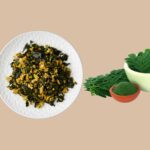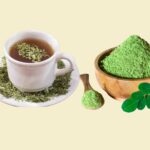Kale is a dark green, antioxidant-rich cruciferous vegetable with sturdy ruffled leaves and a bold, earthy flavor. Popular varieties include curly kale, black cabbage-like lacinato kale, and ornamental red Russian kale. It provides a powerhouse of nutrition. Lettuce comprises tender, pale green leaves with a delicate texture and mild taste. Common types are vitamin-rich romaine, crispy iceberg, and soft green leaf and red leaf lettuce. In this blog, we will explore the answer of a question ‘is kale better than lettuce’.
Table of Contents
What is Kale?
Kale is a hardy leafy green vegetable recognized by its dark blue-green leaves that have a frilly, ruffled texture. Curly kale is the most ubiquitous type, but lacinato and red and white Russian kale are also found in stores.
Kale Varieties
There are many edible varieties of kale. Curly kale has deep green crumpled leaves. Lacinato kale is darker blue-green in color with a smooth, pliable texture. Red Russian kale has flat purple-red leaves.
Nutritional Benefits of Kale
Kale is touted for its exceptional nutritional profile, containing bountiful vitamins, minerals, fiber, and potent antioxidants. It has been dubbed a superfood.
What is Lettuce?
Lettuce is a leafy vegetable featuring tender green leaves that form a dense head. It has a very mild flavor and crunchy watery texture. Romaine, iceberg, green leaf and red leaf are common lettuce varieties.
Types of Lettuce
There are numerous varieties of lettuce, including crisphead iceberg lettuce, soft butterhead bibb lettuce, loose leaf lettuces, and nutrient-packed romaine lettuce, among others.
Related: How many calories are in spring mix
Is Kale Better Than Lettuce
Comparing the nutrition info side-by-side reveals some key differences that make kale the nutritional powerhouse.
Kale Has More Vitamins and Minerals: Ounce for ounce, kale provides significantly more vitamin A, vitamin C, and vitamin K than lettuce. It also offers substantial amounts of vitamin B6, potassium, copper, and manganese.
More Calcium, Iron, Magnesium and Phosphorus: Kale contains a greater quantity of important minerals including calcium, iron, magnesium, and phosphorus as compared to lettuce varieties.
Kale Offers More Fiber: Kale supplies more dietary fiber per serving than lettuce, supporting digestion and heart health. The sturdy leaves contain indigestible cellulose.
Related: Lettuce VS Spinach
Kale Has More Antioxidants: Kale boasts a bevy of antioxidants including polyphenols like quercetin and kaempferol that fight inflammation. It also contains beneficial glucosinolates linked to cancer prevention.
Lettuce Has Low Calorie Density: Lettuce has fewer calories per cup compared to kale, because of its high water content. This makes it useful for achieving a calorie deficit for weight loss.
Comparing Protein in Kale and Lettuce: Kale contains more protein per calorie than lettuce, but overall the protein quantity is low in both leafy greens.
Related: How many calories are in a chicken caesar salad
Vitamin K Levels – Kale vs Lettuce
When it comes to vitamin K content, kale far exceeds lettuce, providing ample amounts of this critical nutrient involved in blood clotting and bone metabolism.
Kale Is Highest in Vitamin K: Kale is one of the richest sources of vitamin K, delivering over 1000% of the daily value per serving. It dwarfs the vitamin K content of lettuce.
Lettuce Also Provides Vitamin K: Romaine lettuce contains a moderate amount of vitamin K, but it still pales in comparison to the extremely high levels in kale.
Vitamin K Key for Blood Clotting: Vitamin K allows blood to properly clot after an injury by activating clotting factors. Deficiency causes excessive bleeding.
Vitamin K in Greens Helps Bones: Vitamin K is required to produce osteocalcin, which anchors calcium molecules inside the bone matrix to build strong bones.
Leafy Greens Aid Heart Health: Vitamin K prevents calcification of arteries by inhibiting calcium from depositing in blood vessels. This lowers cardiovascular disease risk.
Related: How many calories are in a chef salad?
Taste and Texture Comparison
Kale and lettuce offer vastly different eating experiences based on their contrasting textures, flavors, and sturdiness.
Kale Has a Sturdier Texture: Kale leaves have a fibrous, stiff texture with a hearty, crunchy bite. The rugged leaves stand up to cooking without becoming mushy.
Lettuce Features Soft, Pliable Leaves: All varieties of lettuce have pliant, yielding leaves with a velvety smoothness. The tender texture is ideal for salads and sandwiches.
Kale Flavor is Stronger: Kale has a robust earthy and vegetal flavor with slightly bitter, pungent notes from compounds like glucosinolates. It makes its leafy presence known.
Lettuce Has Mild, Subtle Flavor: Lettuce contributes a very mild taste, mostly tasting of water with delicate herbal undertones. It acts as a canvas for other ingredients.
Related: How many calories in one slice of white bread
Which Leafy Green is Healthier Overall?
Based on nutrition facts, kale emerges as the superior choice, but both greens can play a role in a healthy diet. Calorie for calorie, kale outshines lettuce by offering substantially higher concentrations of vitamins, minerals, fiber, and antioxidant compounds.
But Lettuce Has Benefits Too: Lettuce excels at providing hydration from its high water content. It also contributes some fiber and vitamins. The low calorie density aids weight loss.
Kale Shines for Antioxidant Content: Kale has a cornucopia of antioxidants like quercetin, kaempferol, and glucosinolates that fight inflammation and oxidative stress to prevent disease.
Lettuce Excels in Versatility: Lettuce’s neutral flavor profile and delicate leaves make it far more versatile for use in myriad dishes like salads, sandwiches, tacos, and wraps.
The Verdict? Kale is Nutritionally Superior
With its stellar nutrition stats including ample vitamins, minerals, fiber, and antioxidants, kale emerges as the clear nutritional winner when pitted against lettuce.
Maximize Benefits – Eat Both!
To harness the nutrition and versatility of both greens, incorporate kale and lettuce regularly into a varied diet. Balance the two by pairing the nutrition superstar kale with the tasty convenience of lettuce.
















